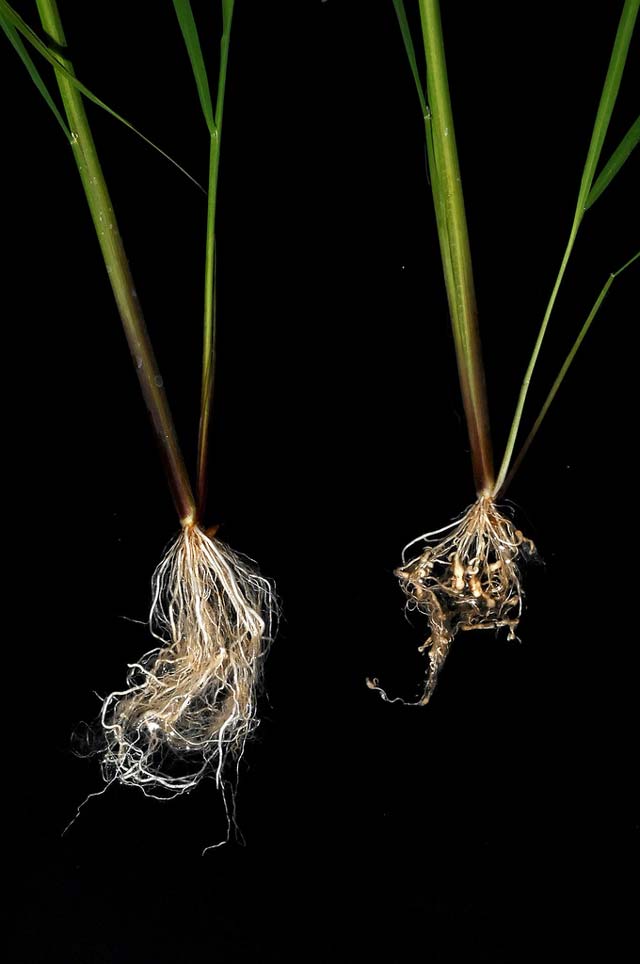Root knot nematode
 What it does
What it does
Infective second stage juvenile of M. graminicola penetrates through the root tips and takes about a minimum of 41 hours. Females develop within the root and eggs are laid in the cortex. Galls are formed in 72 hours. The juveniles or immatures remain in the maternal gall or migrate intercellularly through the aerenchymatous tissues of the cortex to new feeding sites within the same root.
Why and where it occurs
M. graminicola is a damaging parasite on upland, lowland and deepwater rice. It is well adapted to flooded conditions and can survive in waterlogged soil as eggs in eggmasses or as juveniles for long periods. Numbers of M. graminicola decline rapidly after 4 months but some egg masses can remain viable for at least 14 months in waterlogged soil. M. graminicola can also survive in soil flooded to a depth of 1 m for at least 5 months. It cannot invade rice in flooded conditions but quickly invades when infested soils are drained. It can survive in roots of infected plants. It prefers soil moisture of 32%. It develops best in moisture of 20% to 30% and soil dryness at rice tillering and panicle initiation. Its population increases with the growth of susceptible rice plants.
The presence of relatively broad host range and many of the alternative vegetable crops that are grown during dry season are favorable for this nematode.
How to identify
Check for the presence of the nematodes.
Check the plant for the following symptoms:
- characteristic hooked-like galls on roots
- newly emerged leaves appear distorted and crinkled along the margins
- stunting
- chlorosis
- heavily infected plants flower and mature early
Other nematodes can cause similar damage. To confirm root knot nematode, examine roots of host plant for hooked-like galling, these can be stained to determine the presence and populations of M. graminicola (the juveniles of M. graminicola can be extracted from the roots of the host plants).
Why is it important
The rice root-knot nematode is considered one of the limiting factors in rice production in all rice ecosystems. In upland rice, there is an estimated reduction of 2.6% in grain yield for every 1000 nematodes present around young seedlings.
In irrigated rice, damage is caused in nurseries before transplanting or before flooding in the case of direct seeding. Experiments have shown that 4000 juveniles per plant of M. graminicola can cause destruction of up to 72% of deepwater rice plants by drowning out.
How to manage
Where possible,
- Use nematicidal compounds: volatile (fumigants) and nonvolatile nematicides applied as soil drenches.
- Treat seeds with EPN and carbofuran.
- Dip roots in systemic chemicals such as oxamyl or fensulfothion, phorate, carbofuran, and 1,2-dibromo-3-chloropropane (DBCP).
- Use resistant varieties. Contact your local agriculture office for an up-to-date list of available varieties.
To prevent root invasion, practice:
- continuous flooding
- raising the rice seedlings in flooded soils
- crop rotation







